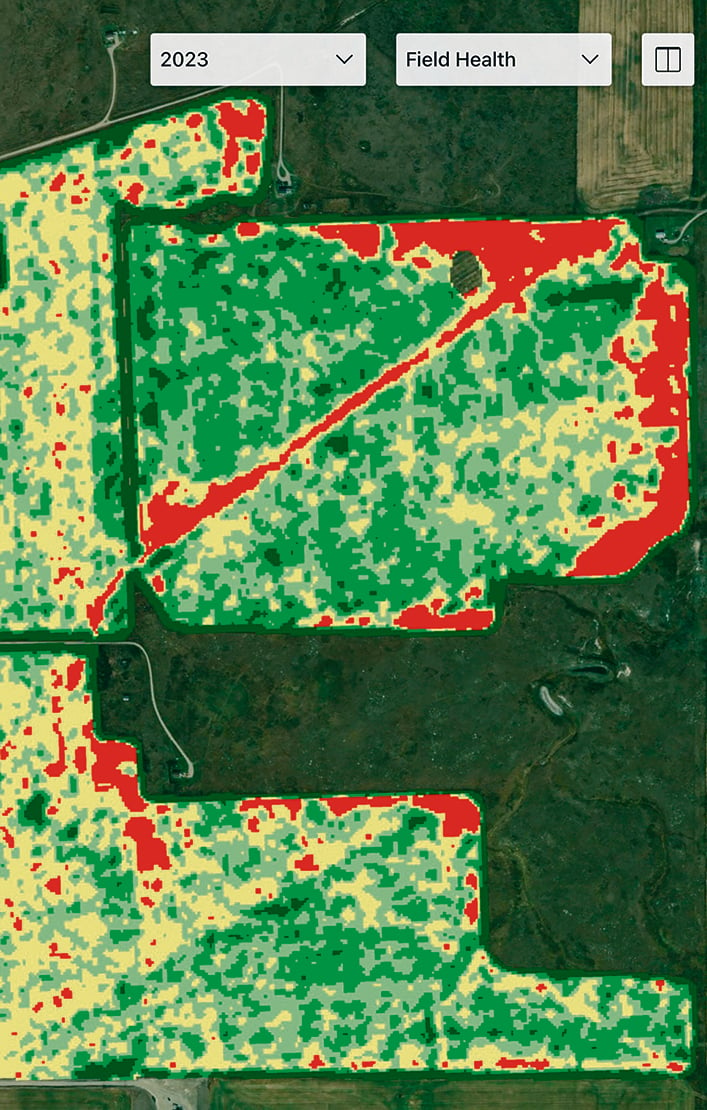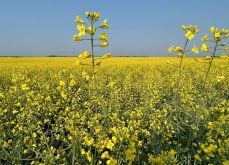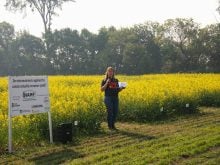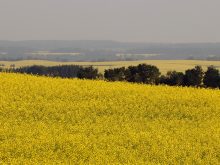Judging by the NDVI satellite image of Dale Steele’s customer’s canola crop, gophers are inflicting considerable damage this spring.
Steele owns Steele Ag Insight, which provides precision agriculture and field services out of Lethbridge. He said gophers love canola, which is especially a problem in dry years.
“In drought conditions where the canola is struggling, we’ve seen gophers take out thousands of acres on individual farms. It depends on each field. One field might not have any gophers, and the next field could have a wicked population of gophers,” Steele said.
The red areas in the NDVI satellite images, provided by Climate FieldView, indicate areas where gophers completely chewed away the canola crop, while the yellow areas show where the pests are still working their way through it.
“Using the imagery, I prioritize my crop scouting activities, and, yeah, that’s gopher damage. Losing strychnine was a big deal. Strychnine was first synthesized 60 or 70 years ago, so it’s been around for a long time and it’s unfortunate that farmers have lost that valuable tool to manage gophers eating their crops.”
In 2020, the Pest Management Regulatory Authority announced a phase-out period after which the product would be banned. That period ended March 4.
James Tansey, Saskatchewan provincial specialist of insect and pest management, said the Saskatchewan government did not support the removal of strychnine and it presented data to the PMRA that showed the product could be used safely and effectively for the control of gophers.
However, once the PMRA’s final decision was made to deregister strychnine, Tansey said Saskatchewan’s ministry of agriculture worked with the ministry in Alberta to develop data on alternative products farmers can use to control gophers.
“The zinc phosphide products, ZP Rodent Oat Bait Ag and Burrow Oat Bait, could be as effective as strychnine for ground squirrel control. My understanding is that large volumes of this material have gone out (this spring) particularly in the southwest, and reports that I’ve heard from growers to date are that they’re encouraged by the results that they’re seeing with those,” Tansey said.
He said the zinc phosphide products are like strychnine in that they also don’t have an antidote.
ZP Rodent Oat Bait Ag and Burrow Oat Bait and are ready to use formulations with no mixing required.
“Just cut the bag open, get a spoon full and fire it down the hole, and with both products you have the option to use bait stations as well, which some growers prefer,” Tansey said.
He said the best time to place bait is from March 15 to April 30, before gophers have a lot of green plants to feed on.
To help control a gopher infestation, a farmer claimed on Twitter that temporarily placing round bales on the edge of a field near a tunnel system can help to reduce crop damage, because birds of prey will spend more time in the area sitting on the bales.
“So, I mean that it really is a de facto raptor platform. They won’t nest on a bale, but they’ll certainly roost on it,” Tansey said.
“For the smaller raptors that are cavity nesters you can use bird boxes. Some of the smaller rappers can be important predators of baby gophers that are starting to come up and in some numbers in some areas right now.”

He said farmers concerned about gophers can also try to increase their tolerance for predators including coyotes and weasels.
Steele said using a buffer strip of a crop other than canola where the gophers are coming in can also prevent crop damage.
“We’re using buffer strips adjacent to fields, like pastures, with a couple drill passes or a couple hundred feet of barley or peas with canola on the interior of the field. This has helped dramatically,” Steele said.
“Gophers don’t seem to like peas very much. So, we’ll look at satellite imagery of the rotation and you can see gopher damage in canola from the satellite images from the past. That and the farmer’s field knowledge. Then we’ll make a plan of how we’re going to manage having canola in the rotation.”
He said there are some fields, where he wouldn’t recommend planting canola because of the history of gopher damage to the crop.
“You don’t get any crop insurance claim with gopher losses. So, one of the things for the future is perhaps crop insurance should cover wildlife damage to include gophers instead of just geese and ducks,” Steele said.


















